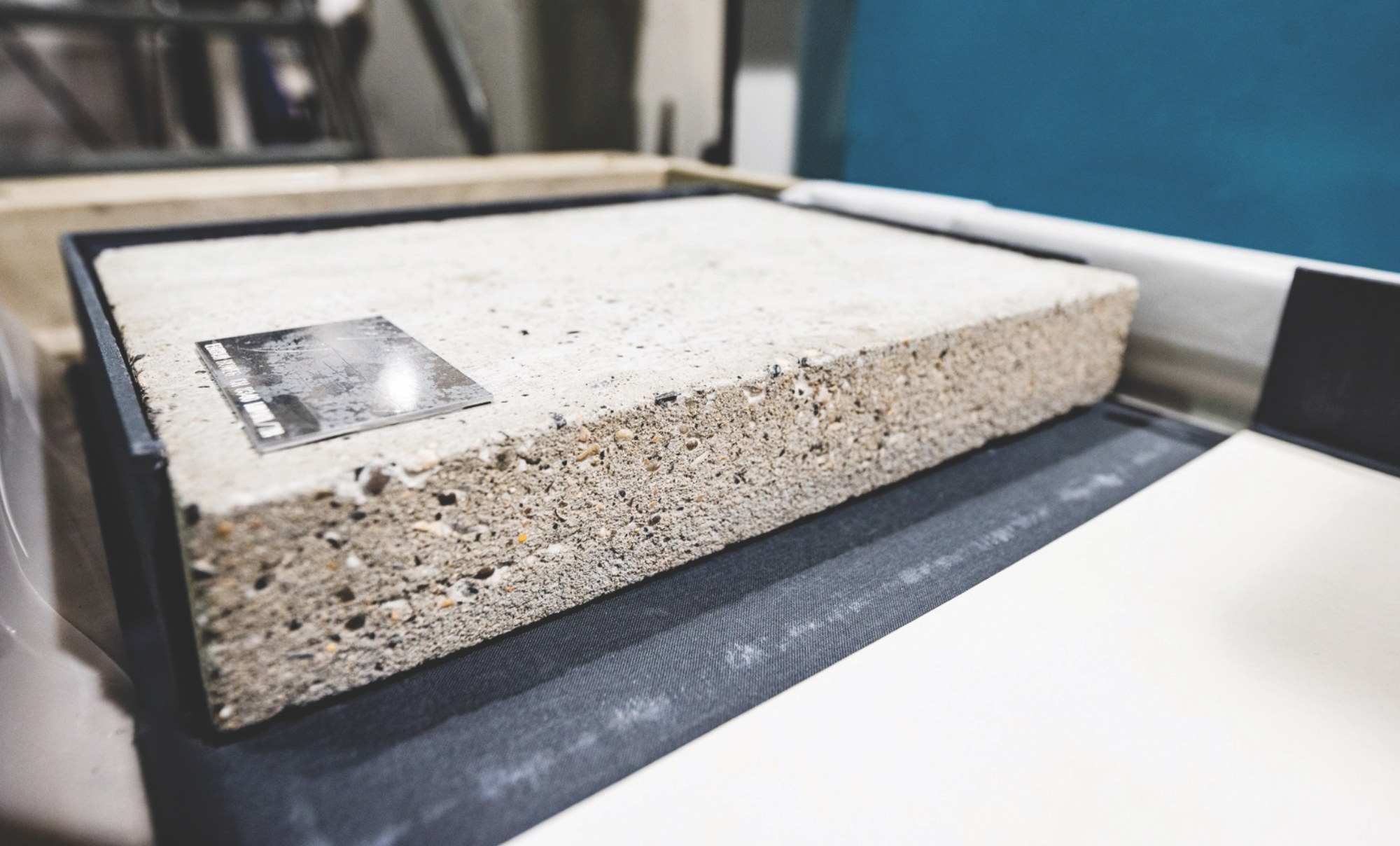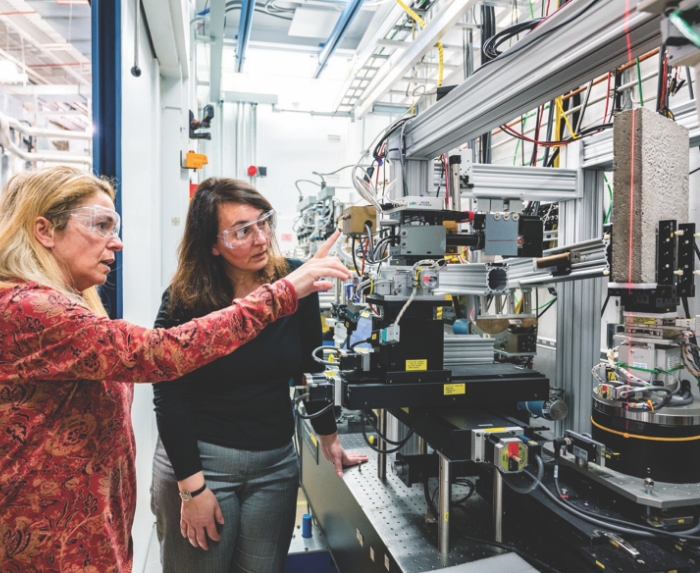
The mysterious Betonbuch, or Concrete Book, by Fluxus artist Wolf Vostell. Ist ein Buch drin? Oder nicht? (Photography by Jason Creps/Argonne National Laboratory)
Is there a book inside that concrete block—or a half-century-old joke?
Patti Gibbons, AB’94, head of collection management in the Hanna Holborn Gray Special Collections Research Center, was working on a library exhibition in 2016 when she first became fascinated by a concrete slab. No ordinary slab, this was a work of art—Concrete Book #83, by the 20th-century German artist Wolf Vostell. When Gibbons heard that it was supposed to contain an actual book, she started to wonder: What if there isn’t anything inside? Or what if there is?
Vostell was associated with the Fluxus art movement of the 1960s and ’70s, which emphasized the artistic process over the finished product. Gibbons first became acquainted with his work the way many a UChicago student did, via Concrete Traffic—a 1957 Cadillac encased in, yes, concrete—that was long displayed outside Midway Studios at 60th Street and Ingleside Avenue. (Gibbons lived nearby in Burton-Judson as a College student.) Its 2016 installation in the Campus North Parking Garage inspired the exhibit for which Concrete Book #83 was purchased.
Concrete Book #83 is one of 100 slabs created by Vostell, each ostensibly containing a copy of his booklet Betonierungen (in English, “Concretifications”). This copy is thought to be the only one owned by a library—and the only one classified as a book in WorldCat, the global catalog of library materials.
In 2020 Gibbons got her chance to peek inside. Christine Mehring, the Mary L. Block Professor of Art History, had put out a call for ideas for class projects on art conservation; Gibbons proposed examining Concrete Book #83. Mehring and Maria Kokkori, an expert in conservation science who was then a visiting lecturer at the art history department (and is now at Northwestern) embraced the project enthusiastically.
The team found help in the lab of Heinrich Jaeger, the Sewell Avery Distinguished Service Professor in the physics department. Their first attempt was a simple X-ray scan, but those results were indeterminate; all that could be clearly seen in the image were wires, possibly used to hold the book in place. Next, they tried an ultrasound scan, but the sound waves were unable to penetrate the thick concrete block.

That’s when they brought out the big guns, applying for time on the Advanced Photon Source (APS) at Argonne National Laboratory. The APS, a massive ring 3,600 feet in circumference, uses a series of particle accelerators to push electrons to 99.999999 percent of the speed of light. The synchrotron radiation emitted by the electron beam generates extremely powerful X-rays, which researchers aim at their experiment stations.
Gibbons and Kokkori were granted precious time at the APS in April 2022. With Argonne scientists, they first analyzed another copy of Vostell’s book Betonierungen to understand the exact chemical composition they would expect to detect inside the artwork. The team compared that with the composition determined using the APS’s X-rays. The results: still inconclusive. “We weren’t able to tell if what we saw was aggregate from the cement, or if maybe the book had pulped out,” Gibbons laments.
Baffled, Gibbons reached out to Vostell’s son to see if he knew more. He related that he had asked his father that same question, to which the elder Vostell replied that the mystery of Concrete Book #83 was part of the concept. UChicago’s copy might enclose an entire book, or just a few pages, or perhaps nothing at all.
Gibbons hasn’t given up on finding a definitive answer—she’s considering taking Concrete Book #83 to a place with still more powerful technology: the Neutron Imaging Facility at Oak Ridge National Laboratory in Tennessee. But she remains philosophical about the quest: “The book is teaching us to live with mystery and to question things.”
